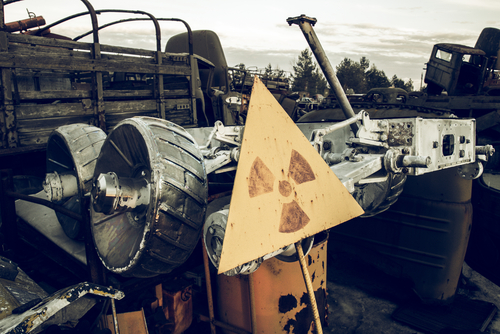The ultra-rare vitreoretinal lymphoma of 10 people in New York City could stem from the long-term effects of the 1986 Chernobyl nuclear disaster, a study suggests.
The report, “A cluster of vitreoretinal lymphoma in New York with possible link to the Chernobyl nuclear disaster,” was published in the journal Leukemia & Lymphoma.
Vitreoretinal lymphoma, or VRL, is a form of primary central nervous system lymphoma. It affects the eye’s retina, optic nerve and vitreous, or clear gel between the lens and retina. It is still unclear what causes it. In fact, there is little information about it altogether.
A research team led by Roxana Moslehi, an associate professor at the University of Albany’s School of Public Health, reported that 10 people were diagnosed with the disease between 2010-2014 at four ophthalmology and oncology practices in New York City.
Only 20 people were diagnosed with VRL in 13 locations across the United States between 1992 and 2014, according to the combined records of the Surveillance Epidemiology and End Results Program of the National Cancer Institute and the New York State Cancer Registry Database. During the same period, 18 patients were diagnosed with it in New York State.
The results underscored the rarity of the disease, confirming that the 10 cases in New York City constituted a cluster.
To understand what might have contributed to the 10 developing VRL, the team analyzed several patient and disease characteristics, including where they had lived, family history, symptoms, and existence of other medical conditions.
“Any clues pointing to risk factors or causes we could learn from studying these 10 cases could be valuable in understanding the biologic mechanisms that lead to this type of cancer, and possibly to other forms of lymphoma as well,” Moslehi said in a news release. “Determining the risk and causative factors is instrumental in disease prevention.”
Their survey revealed that six patients had lived in regions close to the Chernobyl nuclear power facility at the time of the disaster. Four were in Ukraine, one in Poland, and one in Moldova. The median time between the accident and these patients’ diagnosis was 26 years. None had any other medical condition that could help explain their VRL.
The only common demographic factor was Ashkenazi Jewish ancestry, which was found in seven of the 10 patients.
“Though our results do not definitively confirm that exposure to nuclear radiation is a cause of VRL, our findings warrant further research on the role of radiation alone and/or in combination with genetic factors and gene-environment interactions,” Moslehi said.
The study indicated how important multi-center registries are to improving knowledge about rare cancers such as VRL, the team argued.


